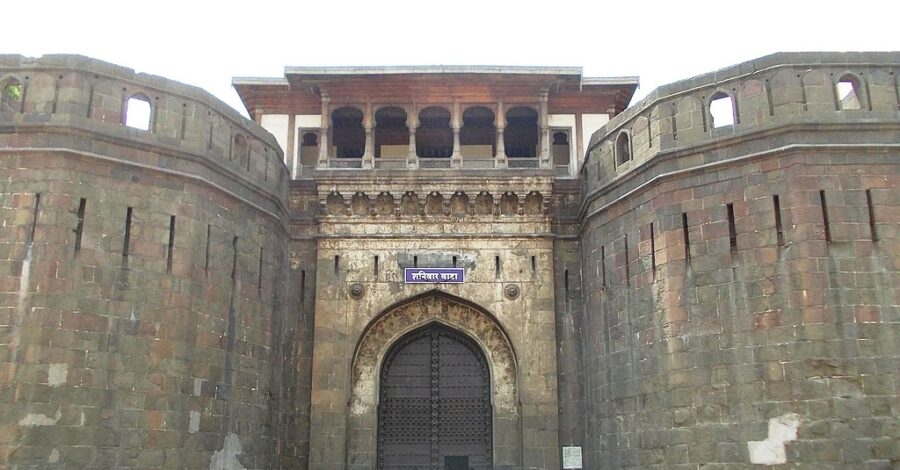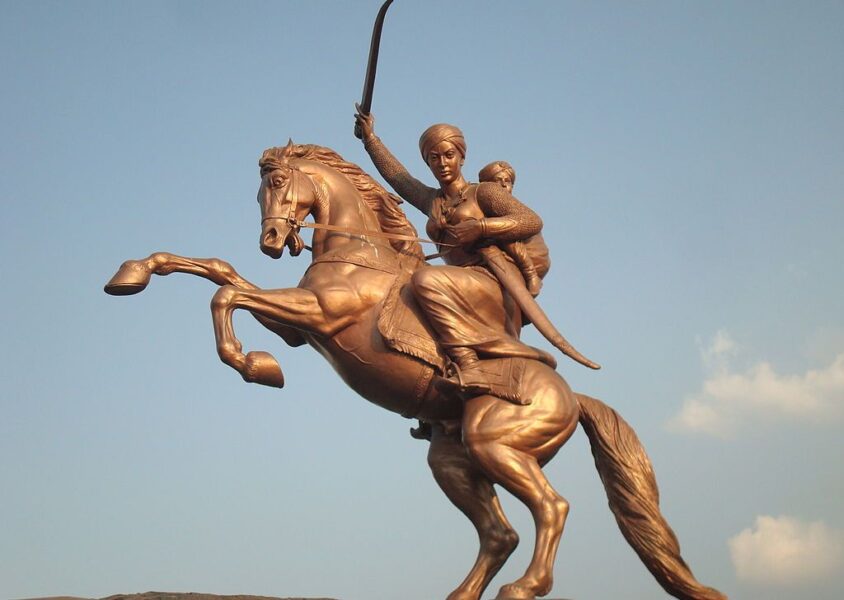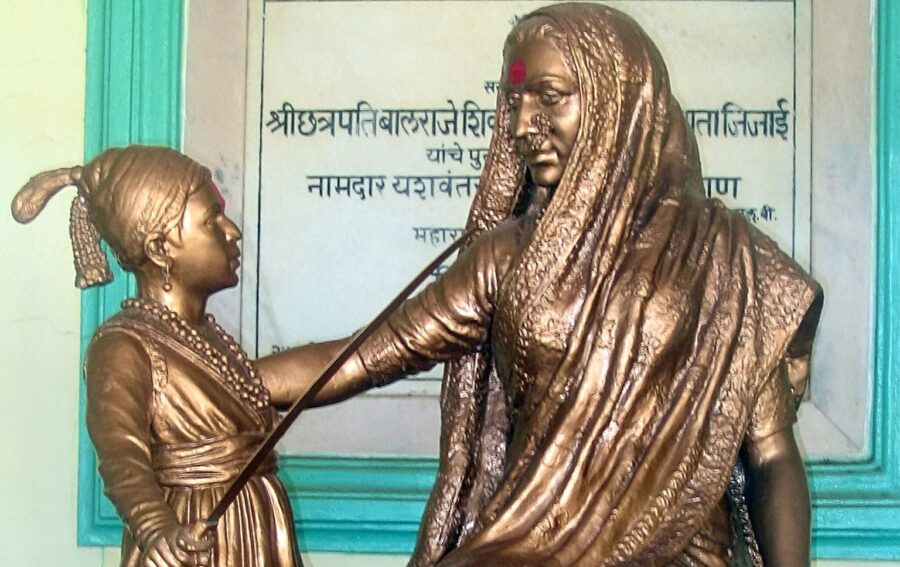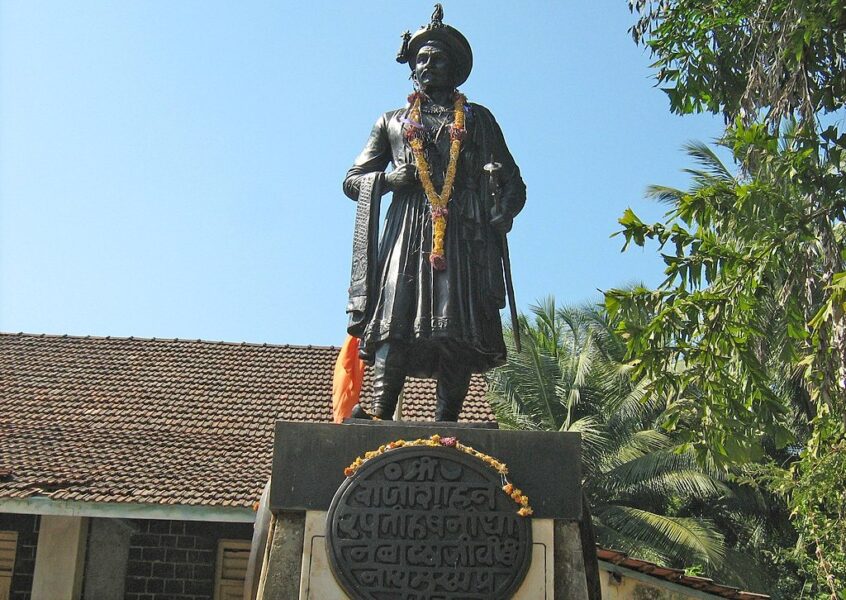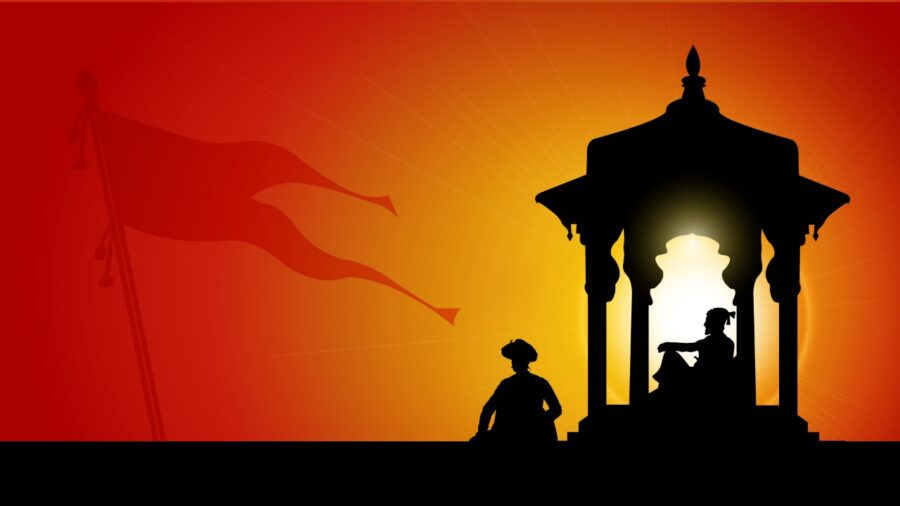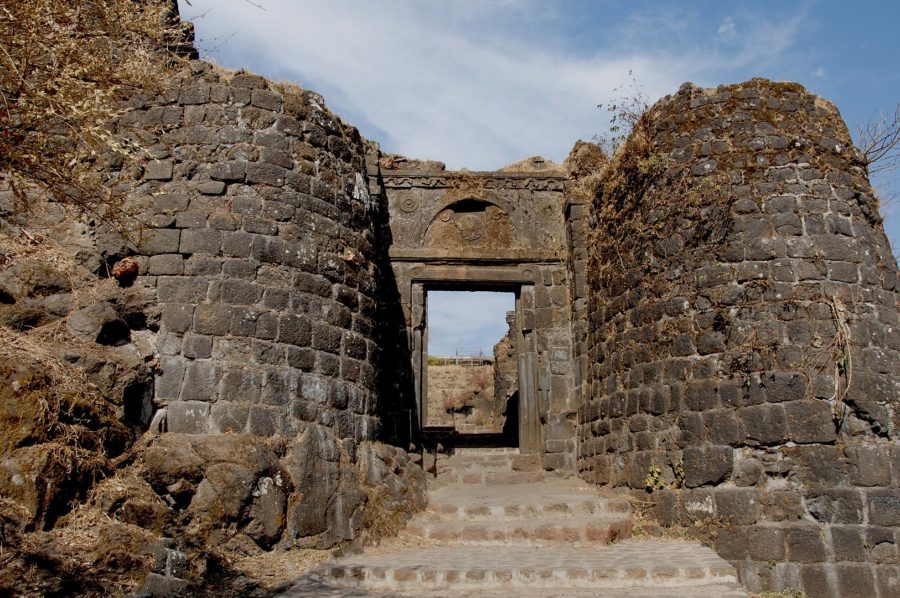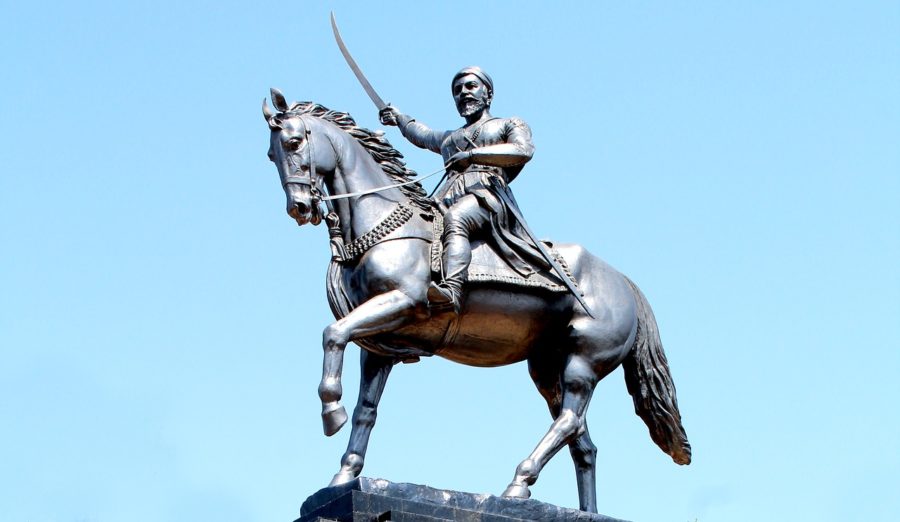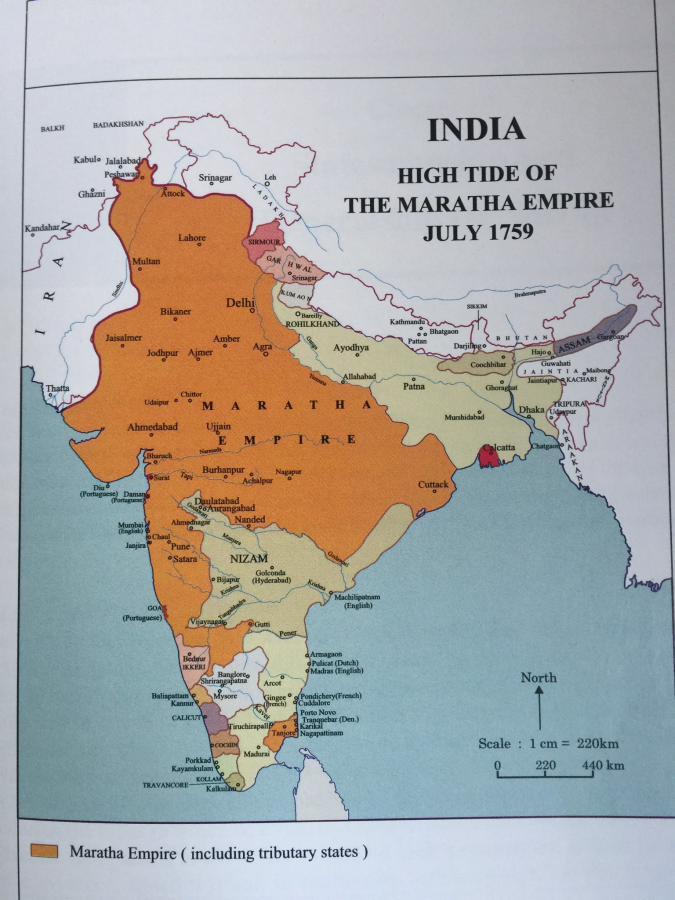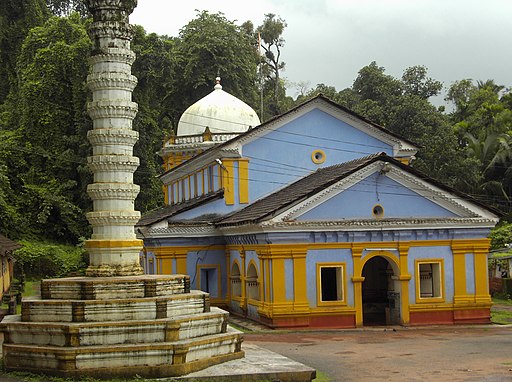On 28th April 1740, Peshwa Bajirao I passed away, leaving behind a vast empire and legacy. The Indian government released a stamp in 2004 commemorating him. What sets him apart from the other great leaders in Indian history?
In Part 1, we traced the first 10 years of Bajirao Ballal’s career as Peshwa or Prime Minister of the Maratha Empire. Now, we take a look at how he established Maratha supremacy in India, and study his personality and legacy.

Peshwa Bajirao I- A Masterful Personality
Invoking the Mahabharat story where Arjun chose Lord Krishna alone for his side rather than his entire army, Chhatrapati Shahu Maharaj was often known to say, “If I had a choice between an army and Bajirao, I’d choose Bajirao!” Soldiers from all over the Deccan also preferred to serve him, and followed him anywhere with the utmost faith. Why?
Social Policies and Lifestyle
Although from a traditional Brahmin family, Bajirao I never discriminated among his people. He chose and promoted people based on merit, and many of his lieutenants came from humble backgrounds. Malharrao Holkar was a mercenary from the Dhangar (shepherd) caste, Ranoji Shinde was a Maratha Kunbi (farmer) and served as the Peshwa’s valet, Govindpant Kher Bundele was a personal assistant, Govind and Ramchandra Patwardhan were sons of a respected but poor Pandit. Under Bajirao’s patronage, they all rose to great heights as generals and noblemen.
The Peshwa also lived the same kind of life as his soldiers; sharing in their troubles and hardships without special privileges. He even ate meat and sat in the same ‘pangat’ with them, no matter their caste or class. Hence, he became the most beloved military leader of his time, and led his loyal troops to victory over many enemies!
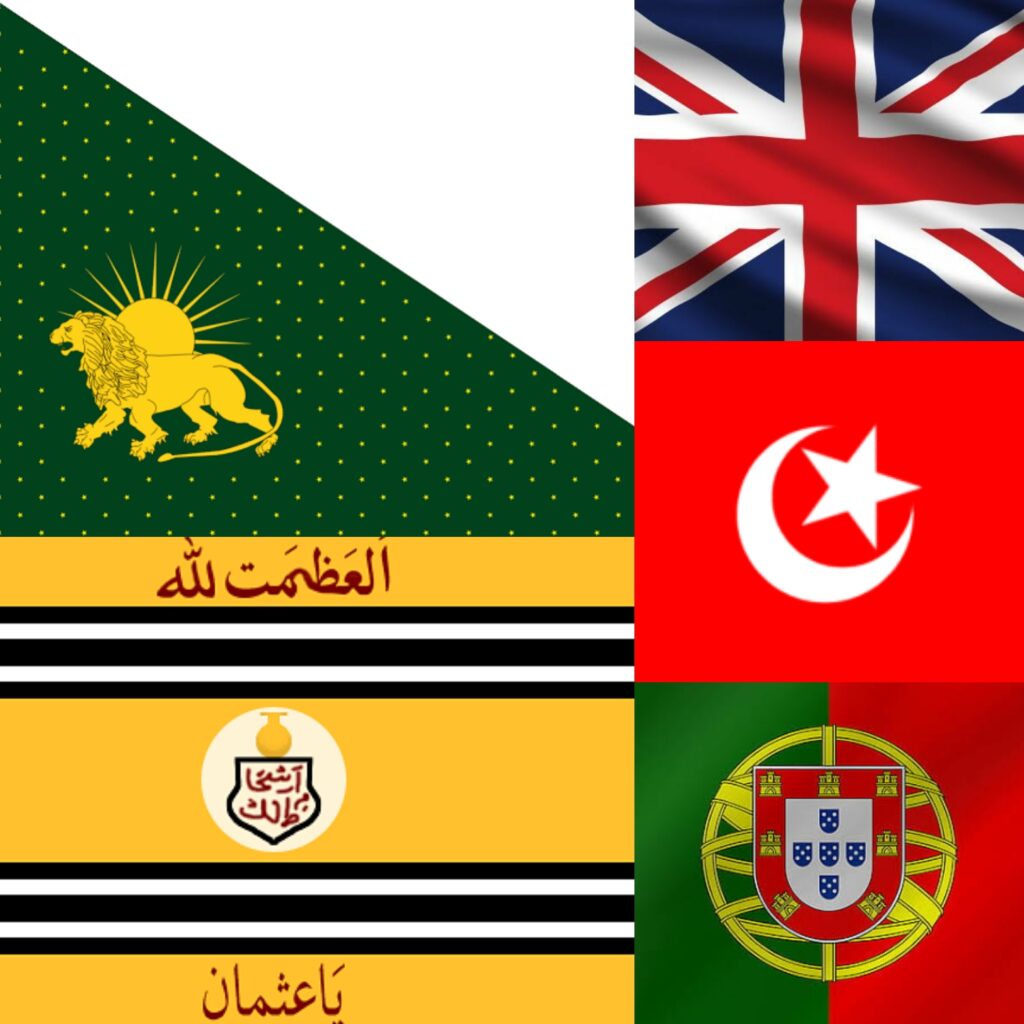
Discipline and Loyalty
Even Bajirao’s enemies admitted his discipline and readiness for any situation; and the same was instilled in his army. His discipline was only exceeded by his loyalty to the Maratha Empire and Shahu Maharaj. Though he became the most powerful chieftain of his times, he always considered himself the Chhatrapati’s servant, paying him due respect and heeding his advice. He rarely disobeyed the Chhatrapati’s direct command…except once.
The Battle of Dabhoi
The Peshwa and the Senapati had always worked closely in the Pradhan Mandal. However, in 1726, a dispute arose when Chhatrapati Shahu gave the Gujarat administration to Bajirao’s brother Chimaji Appa. Senapati Khanderao Dabhade, who controlled most of Gujarat, protested that it would reduce his prestige and income. When he died in 1728, his son Trimbakrao became the Senapati. At this time, tired of constant battles with the Marathas, the Mughal Subhedar of Gujarat, Raja Abhay Singh approached Chimaji to bring peace to the region, in return for half the revenue.
This provoked the Dabhades. Peshwa Bajirao tried to negotiate peace by offering them half the revenue of Malwa. However, the Nizam of Hyderabad convinced Trimbakrao and his mother Umabai this was the Peshwa’s ploy to steal their territory! Trimbakrao rebelled. The Nizam and Mughals supported him, thrilled at the chance of hurting Bajirao.
Peshwa vs Senapati
Alarmed at the tensions between his two ministers, Shahu Maharaj told Chimaji to hand over Gujarat to Trimbakrao. However, Bajirao knew this could embolden other Sardars to blackmail for their demands. weakening central authority. Hence, while Holkar kept the Nizam and Mughals occupied, Bajirao and Chimaji reached Gujarat and fought the Senapati at Dabhoi. Peshwa Bajirao had given orders not to harm Trimbakrao, but he died of a stray bullet.
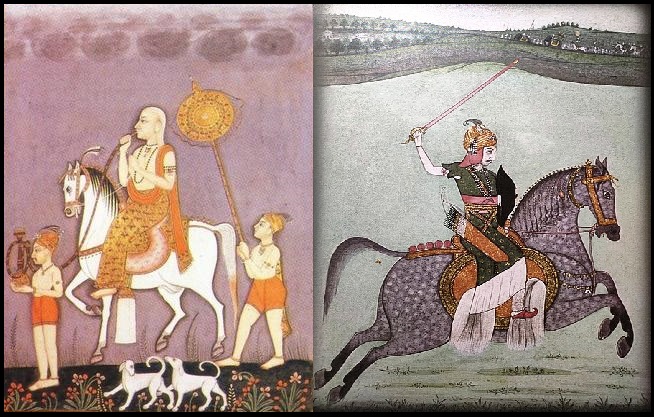
Regretful, Bajirao returned to Satara. The Chhatrapati knew that by allying with the Nizam, Trimbakrao had betrayed the Marathas. He asked Umabai to forgive Bajirao and Chimaji and make peace. The revenue of Gujarat was shared equally between the Senapati and the central government.
Diplomacy with the Nizam
In 1732, Nizam ul-Mulk and Peshwa Bajirao met at Rui Rameshwar to discuss terms. They signed a secret pact to stay out of each other’s way. Why did he make peace with a man who had repeatedly opposed him? The answer reveals both Bajirao’s foresight as well as decision-making ability.

Bajirao knew he could not fight on two fronts forever. He had to decide whether the Marathas should focus on liberating the Deccan from the Nizam, or capturing North India from the Mughals. He knew the Nizam was a cunning, experienced strategist and protected his new territory well. On the other hand, though the Mughals had far greater armies and resources, they were divided and lacked strong leadership. Mughal Emperor Muhammad Shah cared only about luxury and pleasures. Boldly, he decided to focus on Delhi, and establish Marathas as the supreme power!
The Janjira Campaign
The Siddis of Janjira, African-descended Mughal Sardars, had long troubled the Marathas. Chhatrapati Shivaji Maharaj, Peshwa Moropant, and Chhatrapati Sambhaji Maharaj had all fought but failed to capture their island fort. After Chhatrapati Sambhaji’s death, they gained control of much of the Konkan, including former Maratha capital Raigad. Over 44 years, they imposed religious taxes and persecuted Hindus.
In 1733, Chhatrapati Shahu planned a campaign and sent Peshwa Bajirao, Shripatrao Pant Pratinidhi, and Sarkhel Sekhoji Angre. They captured the forts of Tale, Ghosale, Avchitgad, Bankot, Mandangad and Danda Rajpuri. Soon, they recaptured Raigad; and an emotional Shahu regained his childhood home and the Samadhi of Chhatrapati Shivaji!
Soon, the British sent help to the Siddis, and Maratha Admiral Sekhoji died suddenly. These setbacks, along with the Konkan monsoon, made Bajirao withdraw the campaign. However, he succeeded in appointing a new Siddi at Janjira who was favorable to the Marathas. In later years, with Bajirao in the north, the powerful Siddi Sat rebelled. In a fierce battle in 1736, Chimaji Appa killed Siddi Sat and his 1300 men. The Siddis finally became Maratha vassals.
Consolidating Administrative Measures
To focus on Delhi, Bajirao knew it was important to have a strong northern base. Hence, he sent Chimaji Appa and handpicked Sardars to establish a competent administration. The Sardars defeated Sawai Raja Jaisingh at Mandsaur (1732), and Muzaffar Khan at Sironj (1734).
Malwa, the largest Indian province, was divided between Malharrao Holkar at Indore, Ranoji Shinde at Ujjain, and the Pawars at Dhar. Govindpant Kher was appointed to govern the Bundelkhand province and maintain the Bundela alliance, becoming known as Govindpant ‘Bundele’.
We can see the Peshwa’s administrative vision through these measures which brought peace, prosperity, and stability to the newly-won provinces.
Diplomacy in Rajputana
The Mughal court contained two factions. One, led by Wazir Qamruddin Khan and the Rajputs advocated peace with the Marathas. The other, led by Mughal noblemen demanded war. Hence, in 1736, Peshwa Bajirao visited Rajputana to discuss terms.

In Udaipur, Maharana Jagat Singh II gave him a grand welcome and led him to a golden throne beside his own. But to everyone’s surprise, Bajirao sat down on the cushioned silver step below it. When asked why, his answer is an excellent example of diplomatic brilliance.
“I am merely a Prime Minister; the Chhatrapati sits on the throne, and my place is at his feet. Moreover, the accompanying throne is of your ancestor Maharana Pratap! The Sisodias never accepted the Mughals as their masters, so you are worthy of the same status as the Chhatrapati.”
Overjoyed, Jagat Singh sat down next to him. Paying the Peshwa a grand tribute he promised friendship. The Sisodias did not oppose the Marathas for several decades. However, in Jaipur, when Sawai Jaisingh made similar arrangements, Bajirao easily sat on the throne. When Jaisingh asked why, he said, “The Kachchwahas of Jaipur are servants of the Mughals since a century, and have sold their daughters to the Paatshah.” Thus shamed; Jaisingh paid a tribute, and agreed to persuade the Paatshah.
The Rajputs strongly argued in favor of accepting Maratha demands; however, Muhammad Shah refused. It would cost him dearly.
Battle of Delhi
At the end of 1736, Bajirao set out from Pune with an army of 50,000. In Malwa, he was joined by Holkar and Shinde; together they collected the Malwa revenue, while Pilaji Jadhavrao did the same in Bundelkhand. In February 1737, the Marathas reached the Yamuna River, and Malharrao Holkar crossed it with an advance force of 10,000.
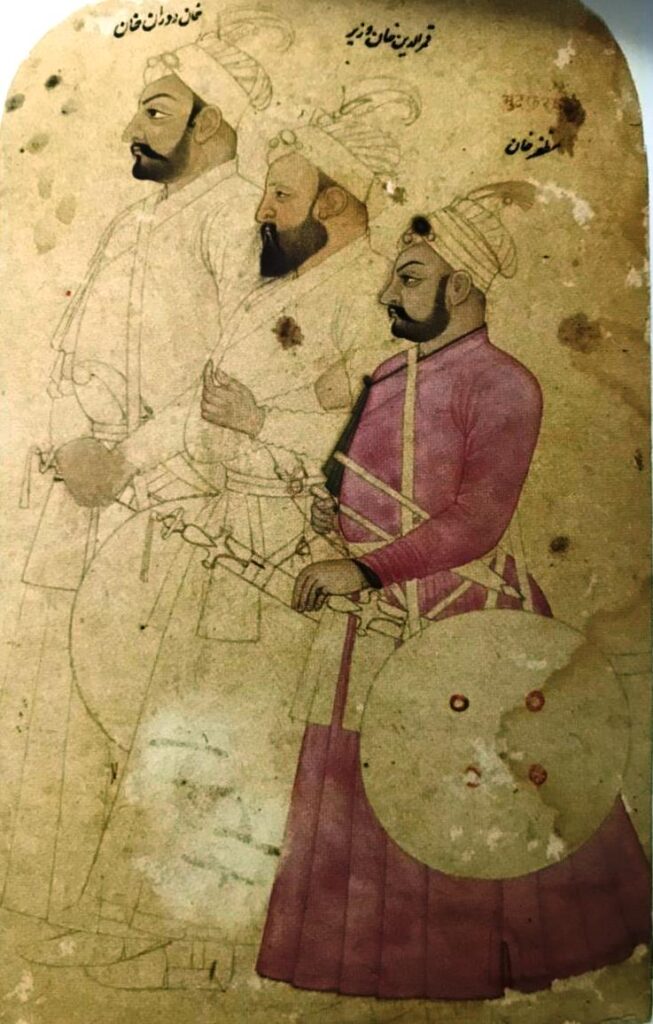
Alarmed, the Mughals sent huge armies led by Saadat Khan, Khan Dauran, Muhammad Khan Bangash, and the Wazir, totaling 1.5 lakh soldiers. Unaware, Malharrao found himself facing Saadat Khan with 50,000 men, and had to retreat. Saadat Khan thought he had defeated the entire Maratha army, and wrote to the Emperor accordingly. Soon, Khan Dauran and Bangash joined him at Agra for celebrations! The Wazir was also close by, and now two huge armies lay in between Peshwa Bajirao and Delhi. What would he do?
Through a narrow forest path, Bajirao led his forces between the two armies straight to Delhi and laid it under siege!
The terrified Mughal Emperor hid in the Red Fort, while Govind Patwardhan easily defeated the remaining army in Delhi. Bajirao could have ravaged Delhi, but that would have broken diplomatic cords. So, Bajirao did not harm the citizens. The Emperor finally agreed to all demands, and Bajirao returned victorious. Delhi had been defeated!
Battle of Bhopal
The Mughal prestige was completely shattered, its weakness exposed to the world. Desperate, the Paatshah called the Nizam with a mighty army to Delhi, made peace, and offered him Malwa in return for defeating Bajirao. A combined elite army of 80,000 marched south with powerful cannons. The Nizam also called his son Nasir Jung from Hyderabad with more men.
Undeterred, Peshwa Bajirao called his banners and marched north with Malharrao Holkar, Ranoji Shinde, Pilaji Jadhavrao, Yashwantrao Pawar and 80,000 cavalry. Chimaji Appa stayed behind to block Nasir’s army, while Raghuji Bhonsle delayed Nasir by guerrilla warfare.
The Nizam heard of Bajirao’s approach, and took shelter in Bhopal Fort. The Peshwa besieged Bhopal, and began to starve out the enemy. When they tried to leave in a Square formation, the Marathas harassed them with guerrilla tactics while avoiding their cannons. Soon, they ran out of food, and in January 1738, the Nizam surrendered.
The Mughals signed a treaty accepting Malwa as part of the Maratha Empire, and the Maratha rights to collect revenue from the Narmada to the Yamuna River. The Nizam swore upon the Quran to never again fight against them. The Marathas turned to the Konkan for a long-pending war with the Portuguese.
Nadir Shah’s Invasion- Hindu-Pat-Paatshahi?
Hearing of the Mughals’ weakness, Nadir Shah of Iran invaded India in 1739. Defeating the helpless Mughals, his looting, raping, burning hordes destroyed Delhi and imprisoned the Emperor. Horrified, all eyes turned to the most powerful man in the Subcontinent- Peshwa Bajirao. However, the majority of the Maratha army was engaged in heavy war with the Portuguese, so he was forced to wait at Burhanpur with a small force.
Many thought if the Mughal Emperor died, a Hindu could become Paatshah of Delhi. But Chhatrapati Shahu Maharaj had no desire to sit on the Delhi throne, as per his promise to Aurangzeb. The Rajputs suggested their most noble Maharana of Udaipur should take Delhi, but all knew that Peshwa Bajirao would be the real power behind the throne.
But before they could initiate this, Nadir Shah reinstated Muhammad Shah as Emperor and left with billions in looted treasure. Shahu Maharaj counseled Peshwa Bajirao to continue the Mughal Emperor as a puppet to preserve peace for the time being, while taking the administration in his own hands.
Battle of Vasai
The Portuguese had ruled parts of the Konkan for 200 years, perpetrating horrors and converting people by force. In 1737, Chimaji Appa began a massive liberation campaign and took Thane Fort, Belapur, Dharavi, and Revdanda.
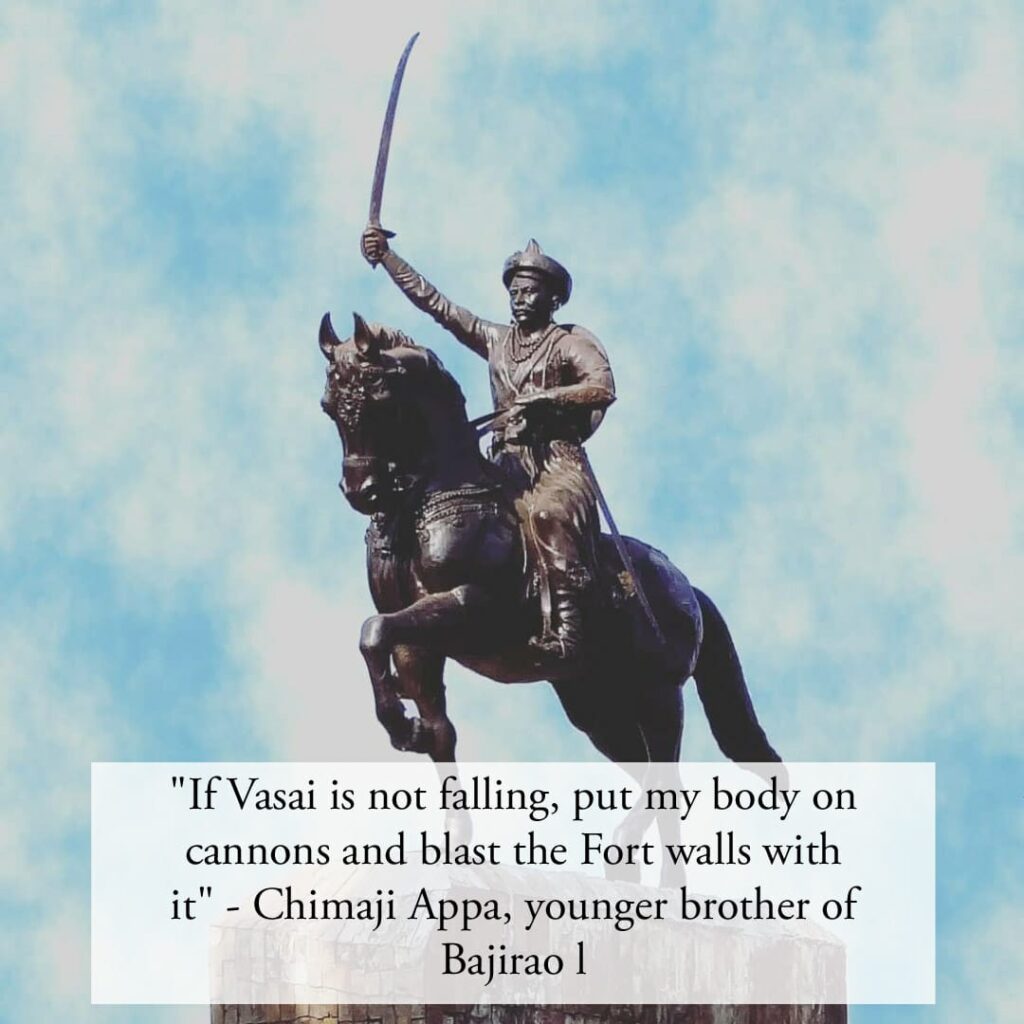
After defeating the Nizam, all the Maratha forces converged at Vasai Fort, which the Portuguese had defended against 3 attacks. In 1739, finally, at the cost of thousands of Maratha lives, Vasai fell. The Portuguese surrendered and left for Goa, their last remaining territory. Konkan was free at last!
Sunset at Narmada
Thus by 1740, the Maratha Empire stretched from Gujarat (west) to Gondwana (east), and Thanjavur and Srirangpatnam (south) to the Yamuna River (north). In 20 years, Peshwa Bajirao had fought 41 major battles without losing a single one; and expanded it from 4-5 districts to covering 30% of India in 20 years.

However, in his last year, Bajirao faced household opposition due to his unorthodox habits (meat, alcohol consumption), and his closeness to Mastani, adding to his stress. After defeating Nasir Jung, he fell ill. Exhausted beyond measure physically and mentally, the Great Peshwa breathed his last at Raverkhedi. As Sir Richard Temple describes, “He died as he lived, in camp under canvas among his men, and is remembered to this day among the Marathas as the fighting Peshwa and the incarnation of Hindu energy.”
He left behind a confident, competent generation of leaders, and an unfinished dream of flying the Maratha flag at Attock. His sons and nephew accomplished it, and for 70 years the Marathas remained Masters of the Subcontinent!
– Ashutosh Dixit
References:
- The Era of Bajirao- Dr. Uday Kulkarni
- New History of the Marathas- G.S. Sardesai
- Peshwa Bajirao I and the Maratha Expansion- Prof. V.G. Dighe
